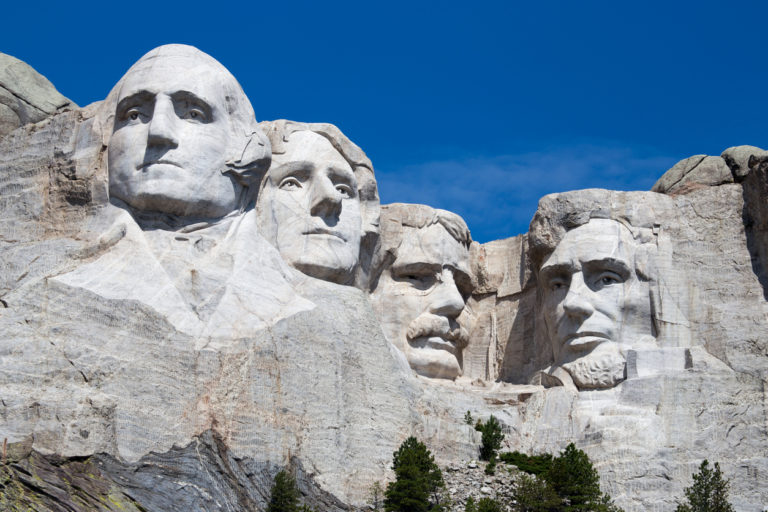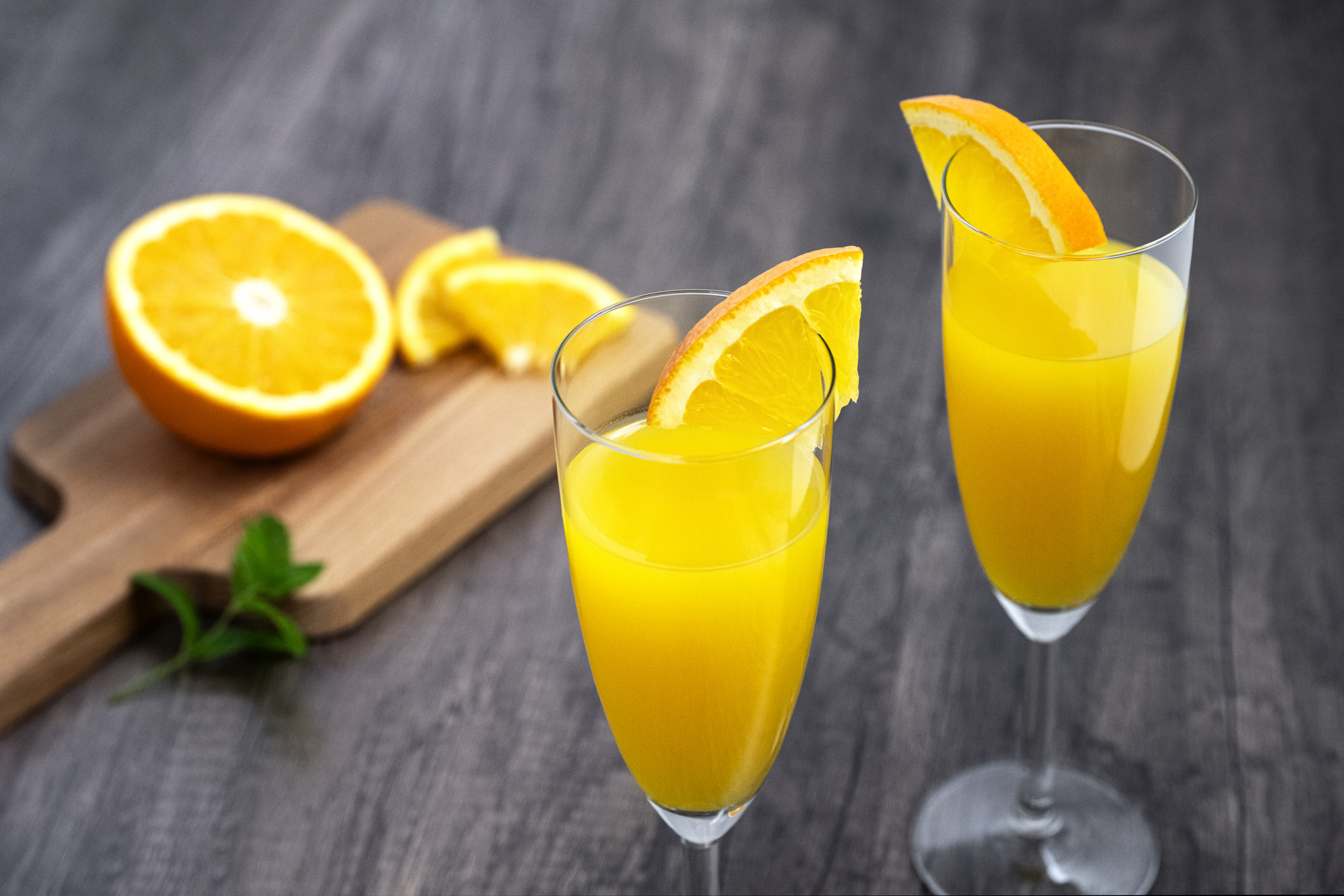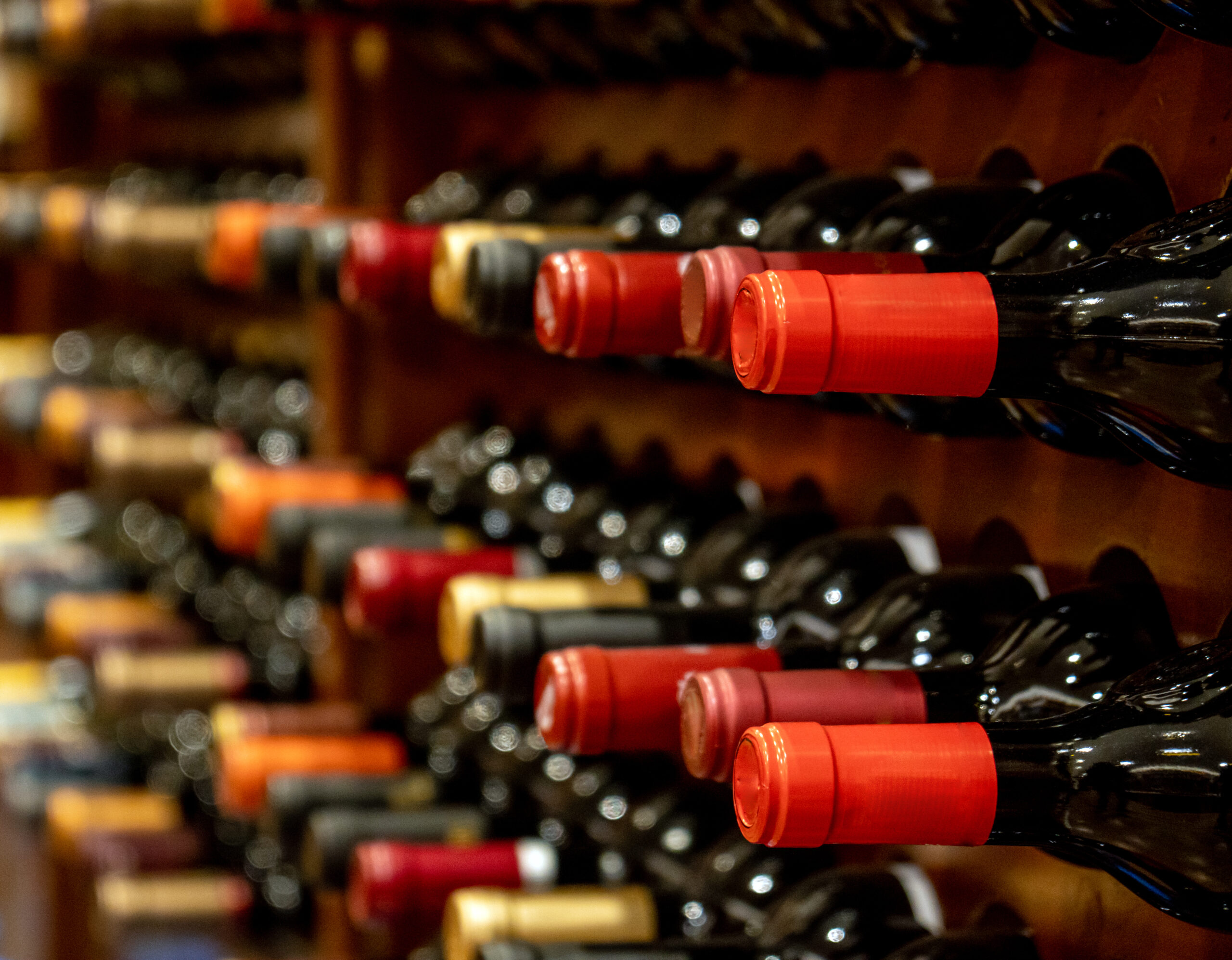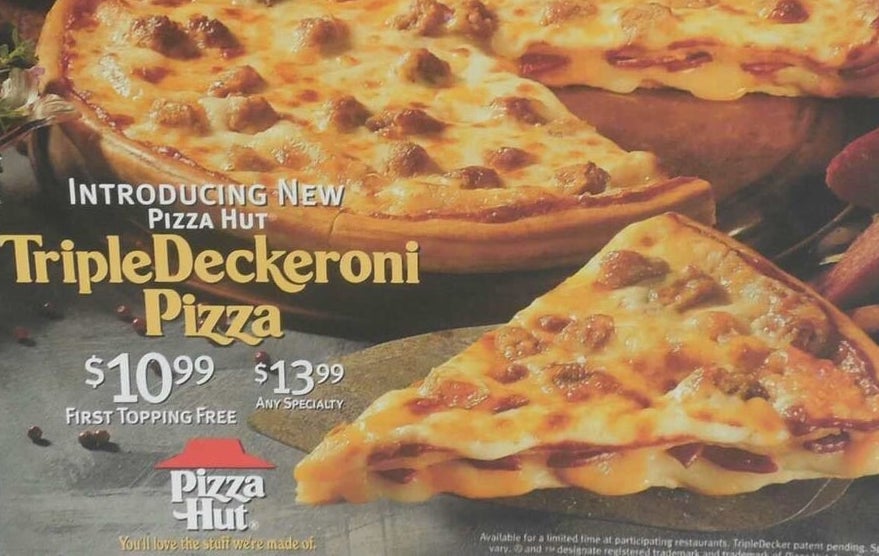Looking backward at presidential preferences gives a unique view of the United States through time. After all, as much as presidents have been their own men, they’re also the products of their eras and upbringings. Presidents’ favorite foods, their culinary habits and quirks, give a snapshot view of the humans behind the Oval Office and of popular American food trends in a given moment.
Is it weird that James Garfield loved squirrel stew? Maybe only to a modern reader. In reality, squirrel was (and continues to be) a pretty normal protein.
While some presidents are known for their commitment to junk food (see George H.W. Bush and Donald Trump), others are known for the simplicity and sometimes even sparsity (ahem, Abraham Lincoln) of their dining habits. Some presidents enjoyed cooking. Others simply had preferences that seem strange to a modern reader (ketchup and cottage cheese?). Others’ dominant food narrative is a gaffe they made in talking food (remember arugula-gate?).
Whatever the case may be, digging into the history of presidential dining provides a rich look at the private life of the Commander in Chief. It also explains why George H.W. Bush jogged so much.
Here are a few other presidents’ favorite foods.
Thomas Jefferson considered meat a “condiment” to his primary meal of vegetables.
History remembers Thomas Jefferson as the first – and possibly most passionate – foodie president. And he was primarily obsessed with two things when it came to cuisine.
What were those things that stole his heart?
agriculture and French cooking. As Minister to France before his presidency, Jefferson paid close attention to ingredients and food preparation in between his official duties.
A food revolution was happening in France at the time.
And Jefferson took notice, falling in love with such French favorites as ice cream and mayonnaise. When it came to growing fruits and vegetables, Jefferson sought out varieties from around the world.
Indeed, his tastes ran the gamut.
His terraced gardens at Monticello contained some 330 varieties of 89 species of vegetables and herbs and 170 varieties of the finest fruit varieties known at the time.
But he wasn’t technically a vegetarian.
Though not strictly vegetarian modern standards, Thomas Jefferson’s plant-heavy diet stands out as unique for its time. The people around him certainly took notice of it.
His granddaughter, Ellen Wayles Randolph Coolidge, once wrote:
He lived principally on vegetables… The little meat he took seemed merely as a seasoning for his vegetables.”
Jefferson himself reflected on his preferences, writing:
I have lived temperately, eating little animal food, & that, not as an aliment so much as a condiment for the vegetables, which constitute my principal diet.
Abraham Lincoln barely ate anything.
If Thomas Jefferson was the foodie president, then Abraham Lincoln could perhaps best be described as the spartan one. Those around him reported that the 16th president didn’t eat much at all.
And when he did eat, Lincoln kept things pretty basic.
John Hay, private undersecretary to Lincoln, wrote that Lincoln “was one of the most abstemious of men; the pleasures of the table had few attractions for him… [he] “ate sparingly of one or two courses.” This was “less than anyone [Hay knew].”
Every dish was simple.
So, what did Lincoln indulge in when he sat down to his “one or two courses” a day? He consumed simple fare.
In fact, his meals resemble more modern foodstuffs.
He might enjoy a single egg and a cup of coffee for breakfast or a plate of corned beef and cabbage. But even Lincoln needed comfort food when the pressures of the job began to get at him. Apparently, this comfort came in the form of “chicken fricassee with gravy and biscuits.”
George Washington cared more about who was cooking for him than what he was eating.
When it comes to George Washington’s food preferences, what stands out the most is his preference that Hercules, an enslaved man, prepare his meals.
Following the Revolutionary War, Washington took up residence in The President’s House in Philadelphia.
Unhappy with a series of cooks he tried out, Washington summoned Hercules from Mount Vernon to take over the presidential kitchens.
And the man changed the course of presidential dining.
In fact, Hercules was the first in a long succession of enslaved Black people to take the helm of the First Kitchen.
Washington’s step-grandson wrote about Hercules’s abilities in the kitchen.
George Washington Parke Custis, Washington’s step-grandson, wrote glowingly about Hercules’s prowess, describing him as “a celebrated artiste… as highly accomplished a proficient in the culinary art as could be found in the United States.”
James A. Garfield enjoyed heaping bowls of squirrel soup.
Want to eat like James Garfield? Okay, here’s a bowl of squirrel soup.
While the 20th president enjoyed noshing on squirrel meat, he absolutely hated oatmeal.
In Garfield’s defense, squirrel has largely fallen out of culinary fashion in the modern US. But it was a commonly eaten protein at various points in early American history.
You can make the president’s squirrel stew at home!
The White House recipe for squirrel stew is relatively simple:
Wash and quarter three or four good sized squirrels; put them on, with a small tablespoonful of salt, directly after breakfast, in a gallon of cold water. Cover the pot close, and set it on the back part of the stove to simmer gently, not boil. Add vegetables just the same as you do in case of other meat soups in the summer season, but especially good will you find corn, Irish potatoes, tomatoes and Lima beans.
What next?
Strain the soup through a coarse colander when the meat has boiled to shreds, so as to get rid of the squirrels’ troublesome little bones. Then return to the pot, and after boiling a while longer, thicken with a piece of butter rubbed in flour. Celery and parsley leaves chopped up are also considered an improvement by many. Toast two slices of bread, cut them into dice one-half inch square, fry them in butter, put them into the bottom of your tureen, and then pour the soup boiling hot upon them. Very good.
Lyndon Johnson feuded with a White House chef over “cold bean puree.”
Spoiler: Johnson won.
Lyndon B. Johnson wanted a little bit of Texas in the White House when he took the Oval Office in 1963. Specifically, he craved food from his home state, things like chili con queso, spare ribs, and hamburgers. And he wanted that food served on the cheap.
There was one major roadblock, however.
Johnson’s White House chef that he inherited from the Kennedys, Rene Verdon. Verdon, a French chef schooled in all things fresh and haute, loathed LBJ’s predilection for frozen vegetables and down-home American fare.
It all came down to cold beans.
The two men’s distaste for one another’s food culminated in a standoff over what’s described as “cold bean puree,” probably an analogue of hummus.
Johnson wanted it.
But Verdon wasn’t making it. So, in 1965, Verdon left the White House in protest. Zephyr Wright, the Johnsons’ cook in Texas, replaced him. Her Pedernales River Chili became so popular that the White House pre-printed the recipe on cards that could be mailed out in response to requests for it.
Richard Nixon feasted on quintessential 1970s fare.
…including cottage cheese with ketchup
Google “Richard Nixon food,” and one major Nixon meal will dominate your search results. The man allegedly ate ketchup on his cottage cheese.
And he may have done it regularly.
Aside from the potential gross-out factor of that particular choice, looking at Nixon’s diet as a whole reveals something slightly different. It was peak 1970s California eating.
What’s peak 1970s California eating?
Put simply, it’s health food like wheat germ, cottage cheese, fresh fruit, and skim milk that dominated healthy lifestyles in the 1970s. For the most part, the Nixons’ diet fit squarely into this trend. Baked grapefruit, cold cucumber soup, ripe avocado, and lots of cottage cheese could all be found on their daily menus.
But he also famously loved meatloaf.
Ketchup on cottage cheese isn’t the only dish associated with Richard Nixon, though. He also loved his wife, Pat’s, meatloaf recipe. It’s Pat Nixon’s meatloaf that the White House printed out on recipe cards to be sent to the inquiring public.
William Howard Taft spent years on strict diets in an effort to lose weight.
He worked with a specialist for 25 years.
Perhaps unfairly, history remembers William Howard Taft as the only morbidly obese president. Cartoonists in his own era were merciless in their mocking of his physical shape.
But there was something else less well known.
Taft had a long-term commitment to losing weight with the help of a fitness coach. When he was 48 years old, Taft contacted Dr. Nathaniel E. Yorke-Davies.
And the goal was specific.
President Taft wanted Dr. Yorke-Davies to help him devise a health and wellness regimen. The two men worked together for the next 25 years.
The diet was surprisingly modern.
As part of this plan, President Taft stuck to a strict diet heavy in protein and vegetables and low in sugars and fats. Dr. Yorke-Davies also prescribed special “gluten biscuits,” a diet product he designed himself. Taft also hired a physical trainer.
Plus, he kept a detailed log of his diet and exercise.
Despite this effort, Taft never managed to maintain his goal weight, though he reached it early on in his time with Dr. Yorke-Davies. Looking back, it’s surprising how much Dr. Yorke-Davies’s diet and exercise plan matches modern prescriptions for the very same thing.
JFK’s White House menus got the entire country obsessed with French cooking.
If there’s any single cuisine that can be associated with the young, dashing JFK, it’s French cooking. This isn’t necessarily because Kennedy was himself a Francophile. Mostly, it’s due to his equally dashing wife Jacqueline’s love of French food and culture.
Mrs. Kennedy hired a French chef for the White House.
When the Kennedys moved into the White House in 1961, Jackie set about making the place their own. She redecorated bedrooms; she restored antiques.
And then, she renovated the White House menu.
Most importantly when it came to food, she hired Rene Verdon, a Frenchman, to take over the White House kitchens as Executive Chef.
And there was a definite obsession with the bright, young Kennedys.
So the nation clambered to get a glimpse of the trends and menus of their daily life so that they could test out the same sophistication in their home kitchens.
Verdon’s first state meal made the New York Times.
New York Times readers learned that Verdon served trout cooked in Chablis, a roast fillet of beef au jus, artichoke bottoms.
Not even the dessert was simple.
They enjoyed a sweet dish called désir d’avril (April Desire), comprised of a raspberry and chocolate-filled meringue shell. Perhaps not since Thomas Jefferson had a president’s consumption of French food been so noteworthy.
Dwight Eisenhower loved to de-stress through cooking.
When it came to food, Dwight Eisenhower’s loved to be the one cooking it. It helped him manage the stresses that came with the Oval Office.
And there seemed to be many.
Thanks to the recipes he and his staff kept during his time as president, Eisenhower’s method for preparing steak (grilling it directly on the coals) and a number of his favorite recipes (including vegetable soup, corn pudding, and egg nog) live on.
He developed his love as a young boy.
According to archivist Valoise Armstrong, Eisenhower developed his love of cooking as a boy, prepping food during camping trips.
In fact, Armstrong had a very thorough description of the president’s tastes.
He referred to Eisenhower as “pretty much a man of his generation. He liked bourbon, he liked steak, he liked grilling. He even had a grill installed at the White House that he could cook on.”
George H.W. Bush’s had a legendary hatred of broccoli.
His wife called him a “totalitarian” for it.
Barbara Bush once described her husband as “a total totalitarian” when it came to broccoli. And she wasn’t wrong. When George H.W. Bush became president in 1989, he made this totalitarianism known.
How’d he do it?
He banned broccoli on Air Force One and other presidential premises. When asked about his decision to put a moratorium on the leafy green, Bush had a simple response.
He commented:
“I do not like broccoli. And I haven’t liked it since I was a little kid and my mother made me eat it. And I’m President of the United States, and I’m not going to eat any more broccoli!”
But the man loved junk food.
So what did Bush eat? Mostly anything he wanted: nachos, pork rinds, beef jerky, ice cream, tacos, cake. The list went on. Former aid Pete Teeley summed up the president’s preferences simply: ”Junk food [was] his lifestyle.”
Barack Obama made headlines talking about arugula.
“Anybody gone into Whole Foods lately and see what they charge for arugula? I mean, they’re charging a lot of money for this stuff.” When Barack Obama brought this up on an Iowa farm in 2007, he set off a firestorm.
It became known as “arugula-gate.”
To some, asking about the prices of arugula (allegedly an elitist leafy green) in a state without a Whole Foods presented about as big a gaffe as anyone could make. To arugula lovers, though, it represented something different: a presidential hopeful who knew his artisinal veggies.
Then there are the seven almonds.
Does Obama practice the arugula he preaches? It seems like it.
Moreover, the whole family gets in on the action.
His wife Michelle and personal chef Sam Kass have joked Barack’s so healthy and disciplined, he counts out seven almonds as a snack before bed. “[Not] six, not eight… Always seven almonds.”
Donald Trump is known for his love of fast food.
Great afternoon in Ohio & a great evening in Pennsylvania - departing now. See you tomorrow Virginia! pic.twitter.com/jQTQYBFpdb
— Donald J. Trump (@realDonaldTrump) August 2, 2016
Donald Trump’s love of McDonald’s is well known. In 2016, while Trump was still a presidential hopeful, print newspapers and the internet alike couldn’t get enough of his fast-food-dominated diet.
KFC, McDonald’s, Burger King, you name it, washed down with a Diet Coke, he likes it.
President Trump reportedly enjoys the fact that fast food is “quick.” He also “[likes] the cleanliness” and the “certain standard” of fast food restaurants.
He suggested serving fast food at state dinners.
According to the New York Times, Trump also suggested swapping fast food for the more fussy stuff often served at state dinners. “We should be eating a hamburger on a conference table, and we should make better deals with China and others and forget the state dinners,” he noted.
He made good on it, too.
Trump stuck to this suggestion, serving fast food to multiple national title-winning college athletic teams.
Would you be interested in dining with any of these presidential figures?
And which politician had tastes most similar to your own?








